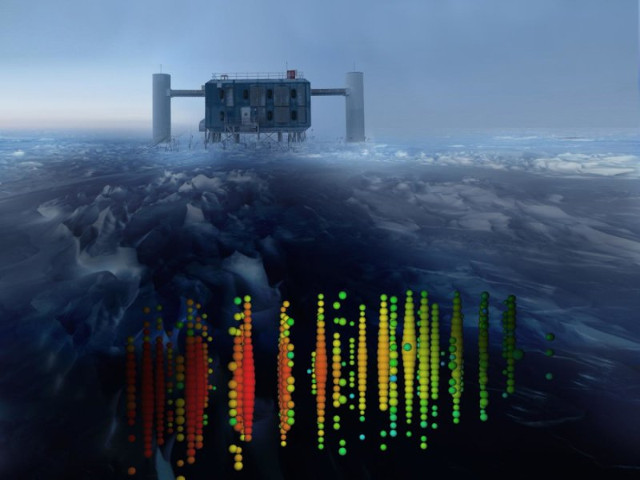
An article published in the journal “Nature” describes the measurement of the probability that neutrinos will be absorbed by Earth depending on their energy and the amount of matter they pass through. The researchers of the IceCube Collaboration used the neutrino detector in Antarctica to better understand the behavior of these elusive particles.
Neutrinos are particles that exist in really huge amounts in the universe but are difficult to study because of their characteristics. They interact very rarely with other particles, so much that neutrinos pass through us all the time, almost always with no consequence at all.
Among billions and billions of neutrinos, sometimes one interacts with another particle and according to current models the probability grows proportionally to its energy. That interaction is the only way to detect them and the IceCube Neutrino Observatory was built for that kind of detection. To be precise, it detects the Cherenkov radiation generated by the interaction and is particularly sensitive to a specific type of those particles, the muon neutrinos.
This new study by the IceCube Collaboration, the organization that manages the detector’s activity, focuses on a type of interaction, called cross section in jargon, for neutrinos with energies ranging from 6.3 to 980 teraelettronvolts. Those are very high-energy neutrinos, far higher than those of neutrinoins produced in particle accelerators or nuclear power plants.
The study focused on 10,800 neutrino interactions between May 2010 and May 2011. The analysis indicated that a fewer amount of neutrinos among the highest-energy ones came from the northern hemisphere passing through the whole Earth to reach IceCube. It’s a confirmation that these neutrinos are more likely to interact with other particles and a result consistent with the Standard Model of Particle Physics.
A planet is needed to stop some neutrinos and this explains the difficulties in this type of study. However, this research shows also a possible IceCube use in the field of geology because the analysis of the interactions between neutrinos and the Earth’s interior could provide new information about the boundaries between its inner solid core and its outer liquid core. This is an interesting development in the use of an instrument created for research in the fields of particle physics and astrophysics.

